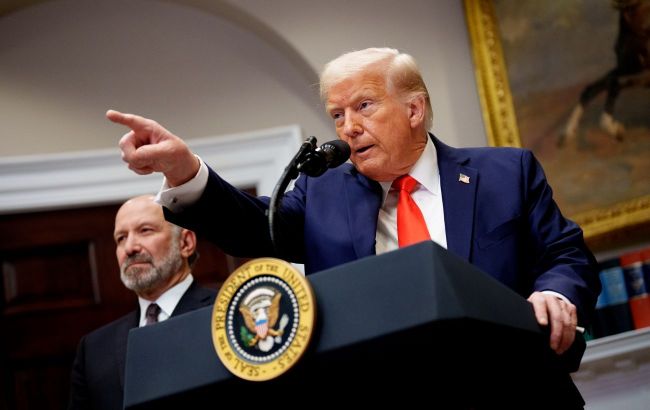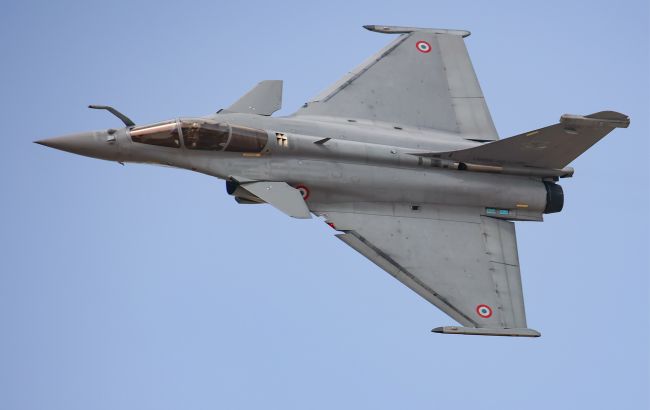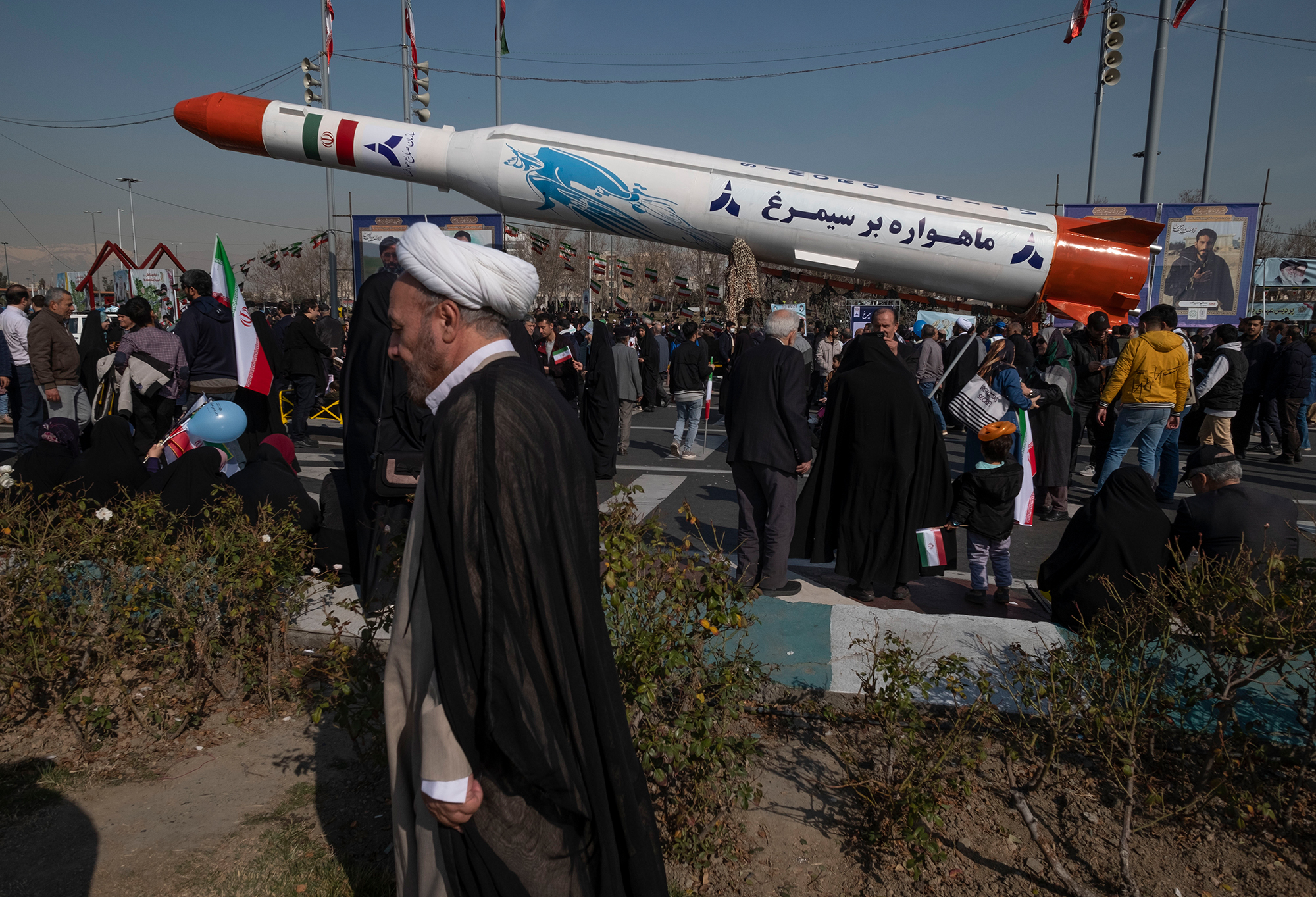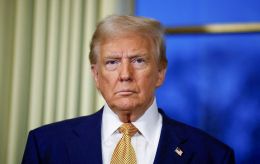Nuclear race 2.0: How Putin and Trump pushing world to new escalation
 Donald Trump (photo: Getty Images)
Donald Trump (photo: Getty Images)
Due to Putin and Trump's actions, several countries worldwide are increasing their attention to nuclear weapons as a security guarantee. Read RBC-Ukraine's article to learn why this is important in the context of Ukraine, how Europe plans to use its own nuclear weapons, and where new nuclear arsenals may appear in the world.
Contents
- Why nuclear weapons important again
- Europe's nuclear umbrella - how to replace US
- Nuclear agenda for Europe
- Nuclear Middle East and Iranian precedent
- Ukrainian context
"It would be great if everybody would get rid of their nuclear weapons," are, surprisingly, the words of the President of the country with one of the largest nuclear arsenals in the world. US President Donald Trump expressed this opinion on March 6 while talking to journalists. However, so far his actions have had the opposite effect.
More and more US partners are considering the option of getting their bomb, realizing that under Trump, no alliance commitments from the United States can be said to be certain. Trump has repeatedly stated that he is not going to defend those NATO members who spend less than 2% of their GDP on defense.
This comes at a time when open armed aggression against other countries has become possible again. The old world order was finally buried by Putin by attacking Ukraine and by Trump by negotiating with Putin instead of trying to bring the aggressor to justice. In addition, Trump's statements about plans to seize Greenland and the Panama Canal differ from Putin's only in that they have not yet been realized.
Why nuclear weapons important again
There are several reliable means of deterring an external attack: developing your defense capabilities, turning your country into a country critical to the global economy (Taiwan has chosen this path), or recalling the relic of the Cold War - nuclear weapons. North Korea, Iran, Israel, India, and Pakistan have long followed the latter path. But with Trump's return to the White House, the circle of potential nuclear weapon owners is growing.
"It is a notable risk, though difficult to precisely assess. In a worst-case scenario, several countries located near China, Russia, and possibly Iran could seek nuclear weapons if they conclude they can no longer rely on the United States to ensure their security," John Caves, Senior Research Associate at the Wisconsin Project on Nuclear Arms Control, a Washington-based organization that monitors nuclear programs around the world, told RBC-Ukraine.
According to Caves, many of these countries have advanced technological and industrial capabilities and experience in civilian nuclear programs.
“But there are also countervailing factors, such as lingering commitment to nonproliferation norms and the risk of preemptive attack or sanctions, that may turn some governments away from deciding to acquire nuclear weapons,” he said.
This has direct but different implications for Ukraine's national security. There are two trends with regard to nuclear weapons. They are clearly visible in Europe and the Middle East.
Europe's nuclear umbrella - how to replace US
On the morning of March 25, dozens of military aircraft took to the skies over France, circled the entire country, and practiced launching ASMP-A missiles carrying nuclear warheads. French Rafale B nuclear weapon carriers, Rafale and Mirage cover fighters, and A330 MRTT air tankers were practicing breaking through air defense and striking a likely enemy as part of the Poker-2025-1 military exercise.
Although such exercises take place regularly, four times a year, this time they had a special feature. They took place during the day, not at night. This innovation is significant against the backdrop of the French leadership's statements about expanding its nuclear umbrella to other European countries.
French President Emmanuel Macron stated in a March 5 address to the French that he had decided to launch strategic discussions on the defense of the entire continent with their nuclear weapons. Later, the country's Foreign Ministry clarified that nuclear weapons are designed to protect the vital interests of the French nation, which also has a European dimension. At the same time, French nuclear weapons can only be used for deterrence.

The Rafale multi-role fighter jet (photo: Getty Images)
For now, the US nuclear weapons remain in Europe. According to The New York Times, the Trump administration has privately assured allies that it will maintain the nuclear umbrella. However, Trump's actions show he can quickly change his position. Therefore, the idea of sharing France's nuclear weapons has already been supported by the future German Chancellor Friedrich Merz. According to Politico, Denmark and Poland are also ready to discuss the initiative.
However, for any nuclear deterrent to work, several components are needed. In particular, Russia needs to be reassured that France and Europe are ready to use nuclear weapons, Polina Sinovets, head of the Center for the Non-Proliferation of Nuclear Weapons at Odesa National University, told RBC-Ukraine.
"In Russia, there is already a general impression that the French are just talking, that Europeans are generally spineless, they can't do anything, they only rely on America. This is not entirely true, but I think that France will have to work hard to overcome this narrative," Sinovets said. According to her, France's allies also need to believe that Paris is ready to protect them, and that Russia understands this.
Therefore, systematic actions are needed in this area to replace American nuclear weapons with French and British ones, Oleksii Izhak, an expert at the National Institute for Strategic Studies, told RBC-Ukraine.
"It's not just a matter of saying that an airplane has arrived at the airfield. This plane should be in a protected hangar, nuclear munitions should be stored underneath it, and they should be moved from base to base so that the enemy does not know where they are," said Oleksii Izhak.
The good news is that there is no need to invent new mechanisms here - you can simply adjust the existing ones.
Nuclear agenda for Europe
The United States currently deploys its nuclear weapons in several NATO member states in Europe. These are Italy, Germany, Belgium, the Netherlands, and Türkiye. This is done under the Nuclear Sharing program, which is essentially a system of bilateral agreements.
Nuclear weapons are under the control of the United States, but can be used jointly with allies if necessary. It is not known exactly how many American warheads are deployed and in what condition they are, but the Federation of American Scientists (FAS) estimates that it is approximately 100 B61-12 bombs.
To practice their use, NATO conducts the Steadfast Noon nuclear military exercise every fall. During the exercise, scenarios are practiced that include the use of tactical nuclear weapons, but do not involve their actual use. This is a simulation to practice procedures and communication.
The main purpose of the exercise is to test coordination between the allies, ensure the readiness of NATO's nuclear forces, and demonstrate the alliance's ability to defend its members. At the same time, the maneuvers involve not only those countries with US nuclear weapons on their territory. For example, in 2024, the exercise involved over 60 aircraft from 13 NATO countries and involved about two thousand military personnel.
 Emmanuel Macron at the opening ceremony of the new French nuclear submarine Suffren, 2019 (photo: Macron's official Instagram)
Emmanuel Macron at the opening ceremony of the new French nuclear submarine Suffren, 2019 (photo: Macron's official Instagram)
In practice, replacing US nuclear weapons with another consists of several elements. The first is to conclude new bilateral agreements.
“It is also necessary to resolve the issue of the procedure to replace these nuclear weapons and infrastructure that is currently occupied by the Americans - F-16, F-18, and F-35 with B-61 bombs - with, for example, Rafale with ASMP-A missiles,” Oleksii Izhak noted.
The easiest way to do all this is based on French forces. As for the involvement of another nuclear country, the United Kingdom, there are many problems. The country is not a member of the European Union and has closer ties with the United States. In addition, the kingdom's nuclear forces are dependent on America. About 260 nuclear warheads are deployed only on Trident II D5 ballistic missile submarines, which are maintained by the United States.
According to Izhak, France has enough nuclear warheads of its own. According to the Sinovets, an increase in their number is still necessary because, in the new environment, they have to protect a much larger territory. According to Defense Express, 240 TN75 warheads with a yield of 110 kt and new TNO warheads with a yield of 100 kt. They are installed in M51 ballistic missiles on four Le Triomphant-class nuclear submarines. There are also 54 TNA warheads of 100-300 kt installed in ASMP-A supersonic missiles carried by Rafale aircraft.
However, the problem is that France and the UK do not have enough low-yield warheads. "The bombs that the Americans have have variable yields from a few kilotons to fifty kilotons. And Russia always knows that this weapon can be used at any time on the battlefield,“ Izhak told the agency, ”while the French and British do not have such low yields now, they start at a hundred kilotons. It is possible to reduce the power quite quickly, but it still needs to be done."
According to Oleksii Izhak, all these changes can be implemented in a fairly short time. It may take a year to change procedures. But then they need to be practiced in exercises. Reducing the power of warheads is possible in a comparable time frame. At the same time, the expert does not rule out that certain steps in this area began much earlier than Macron's statement, so the results may be faster.
Nuclear Middle East and Iranian precedent
While in Europe it is a matter of constructive and potential deterrence of the aggressor, in the Middle East, nuclear weapons can become a factor that, on the contrary, will add to chaos. The main problem in this context is Iran and its nuclear program.
The country does not yet have nuclear weapons, but it is quite close to it. According to RBC-Ukraine, the weakening of Iran's deterrence/attack network in the Middle East has prompted a radicalized part of the elite in Iran to create nuclear weapons as the only possible means of defense against external attack.
There is no evidence that a final decision has been made. However, the IAEA reported in a February report that Iran's stockpile of enriched uranium had increased significantly. IAEA Director General Rafael Grossi stated on February 26 that Iran was the only non-nuclear-weapon state enriching to a level that caused him serious concern.
In recent years, many Middle Eastern countries - Saudi Arabia, Egypt, and Türkiye - have suggested in media leaks or through publications in leading think tanks that they could start developing nuclear weapons under certain conditions. We should also add countries from outside the region, such as South Korea and even Japan. For now, this could bring them more trouble than good. Nuclear weapons, in addition to their advantages, also mean high costs, economic pressure, and possible sanctions from the United States, and dependence on foreign technologies.
But a nuclear Iran could set off a chain reaction, after which other countries would have little choice but to either go nuclear themselves or face the threat of an Iran that would feel impunity under its nuclear umbrella and likely become more aggressive. After all, Iran has been set an example by Russia, which occasionally threatens with nuclear weapons.
 Public demonstration of the Simorgh missile launcher in Tehran (photo: Getty Images)
Public demonstration of the Simorgh missile launcher in Tehran (photo: Getty Images)
Given all this, Trump has renewed pressure on Tehran to abandon the idea of developing nuclear weapons. This means sanctions and attempts to influence Iran through third countries.
And this is where the Ukrainian context comes in. According to RBC-Ukraine's interlocutors in the Ukrainian government, Trump has recently begun linking the Ukrainian and Iranian cases in his contacts with Russia. The idea involves possible concessions from the United States regarding Ukraine in exchange for Russia putting pressure on Iran over its nuclear program. The Kremlin responded to this by agreeing.
“Russia is ready to offer its good offices to Washington, Tehran, and all those who are interested in this,” Russian Deputy Foreign Minister Sergei Ryabkov told the International Life agency on April 1.
But whatever the promises, in practice, the Kremlin can do little. "Russia does not appear to have much leverage over Iran at the moment. It is not a major economic partner for Iran and is unlikely to become one, as the two countries’ economies are not complementary from a trade perspective: both rely on energy exports," John Caves told RBC-Ukraine.
According to him, Moscow could offer to expand sales of conventional weapons to Iran in exchange for Iran's abandonment of nuclear weapons, but it is unclear whether Tehran would agree to this.
At the same time, the use of Russia as an intermediary between the United States and Iran carries many risks for America. “The United States should be wary of Russia serving as a go-between for indirect talks, as any messages passed through Moscow would likely be filtered to serve Russian interests, possibly at the expense of either Iranian or American interests or both,” Caves emphasized in a commentary to the RBC-Ukraine news agency.
At the same time, Trump can ignore neither analysts' assessments nor his intelligence data, and for a long time remain in the grip of illusions about Putin. For example, the US President began to understand Putin's intentions regarding the end of Russia's war against Ukraine only recently, after Russian strikes against Ukraine continued despite the energy truce.
Since the end of March, relations between the US and Iran have been particularly strained. Trump turned to harsh rhetoric and even suggested an attack on Iran's nuclear facilities. At the same time, the US deployed B-2 bombers to the Diego Garcia air base in the Indian Ocean. They are equipped with stealth technologies and are capable of carrying the heaviest American bombs. Iran took this step as a threat and put its armed forces on alert.
The British Daily Mail, citing sources in Tel Aviv, reports that Israel may join the upcoming attack on Iran. However, in this case, a new source of instability may arise in the Middle East. This, in turn, will distract the United States, including from Ukraine.
Ukrainian context
Events in Europe and the Middle East show that nuclear weapons can play both a positive and a negative role. Under certain conditions, they can ensure that Russia will not attack European countries that have become Ukraine's deep rear. However, there is no question of extending the nuclear umbrella to Ukraine. Just as with Ukraine's accession to NATO, Europe is not yet ready to use force against Russia.
However, there is still room for cooperation with European NATO members in this area. Ukraine has already become a de facto part of NATO's eastern flank. This is also possible about certain components of the nuclear deterrent, of course, after the war is over.
We are talking about cooperation on long-range weapons that can be equipped with nuclear warheads. There is already interest in this in Europe. In addition, intelligence sharing remains important.
This is assuming that the nuclear nonproliferation regime is maintained and Iran's nuclear ambitions are curbed. If Trump fails, it will again show that aggressors can go unpunished.
If the nonproliferation regime collapses, other scenarios will be possible for Ukraine and other countries. President of Ukraine Volodymyr Zelenskyy has repeatedly stated that nuclear weapons can be a guarantee of security for Ukraine instead of joining NATO. Importantly, Poland has recently started making statements about nuclear weapons as well.
“We have the materials, we have the technology, they (the Poles - ed.) have the NATO umbrella, so far, they have interest, American aircraft and a very good military infrastructure,” Polina Sinovets told the agency.
We are still far from such a development, but with every miscalculation by Trump, it becomes more and more real. And this should at least be taken into account.
Sources: statements by American, French, Ukrainian, and Russian politicians, IAEA reports, Federation of American Scientists, Defense Express, The Cipher Brief, Breaking Defence, and comments by John Caves, Polina Sinovets, and Oleksii Izhak.

